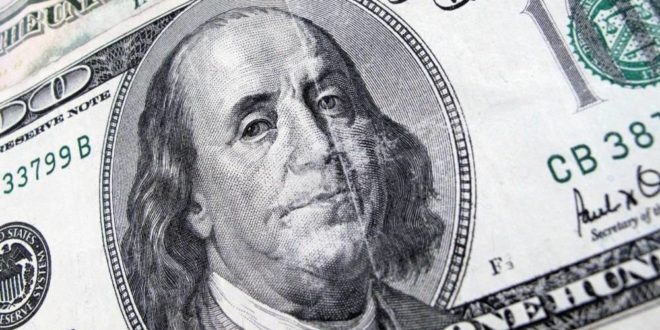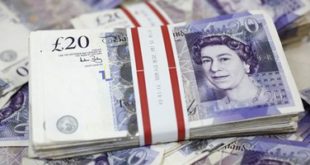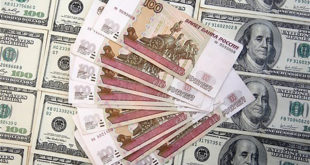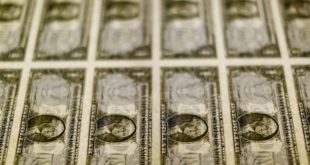The star of the dollar has begun to decline recently, in light of events the world is facing, including competition from China, the repercussions of the Russian-Ukrainian war, and the controversy once again in Washington over the US debt ceiling.
Another aspect is the sanctions imposed by the global financial systems on Russia, which has raised speculation that countries that are not allies of the United States may turn to a currency other than the dollar.
As a result of all of the above, the dominance of the dollar has been subject to reconsideration, and the world may turn to another currency and cancel dollarization, or it may not find a way out of the dollar and the king remains on his throne.
Reserve currency
The dollar’s share of official foreign currency reserves fell to a 20-year low of 58% in the fourth quarter of 2022, according to International Monetary Fund data. This shift was even more pronounced when adjusted for the exchange rate.
What happened in 2022 was a very sharp drop in the dollar’s share in real terms, and that this was a reaction to the freezing of half of Russia’s $640 billion in gold and foreign exchange reserves after its war with Ukraine in 2022.
This has led some countries, such as Saudi Arabia, China, India and Turkey, to rethink the direction of other currencies.
In the fourth quarter of 2022, the dollar’s share of central banks’ foreign reserves reached its lowest level in two decades, but the move was gradual and is now at roughly the same level as in 1995.
Central banks put their money in dollars in case they need to support exchange rates during economic crises, because if the currencies of their countries decline sharply against the dollar, then oil and other commodities traded in the US currency become very expensive, which raises the cost of living and fuels inflation. Many currencies, such as the Hong Kong dollar and the Panamanian balboa, have been pegged against the dollar for similar reasons.
Market control
The dollar remained the commodity trading currency, which enabled Washington to impede the access of producing countries, such as Russia, Venezuela, Iran and others, to the markets.
But this matter is shifting, as India is buying Russian oil in rubles and UAE dirhams, and China has turned to the yuan to buy $88 billion worth of Russian oil, coal and minerals, and completed the “China National Oil Company” and the French “Total Energies” in March. First LNG trade settled in yuan.
The yuan’s share of global over-the-counter forex transactions has risen, from almost none 15 years ago, to 7%, according to the Bank for International Settlements.
complex system
De-dollarization would require a vast and complex network of exporters, importers, currency dealers, debt issuers and lenders to independently decide to use other currencies, which is unlikely.
The dollar accounts for nearly 90% of global forex transactions, accounting for about $6.6 trillion in 2022, according to Bank for International Settlements data.
The Bank for International Settlements stated that “about half of all foreign debt is in dollars, and half of world trade is accounted for in dollars.”
Economists believe that the functions of the dollar are mutually reinforcing.
There is no mechanism to get banks, corporations and governments to change their behavior at the same time. While there may not be a single successor to the dollar, the multitude of alternatives could create a multipolar world.
Countries have long recognized that having one or two dominant reserve asset groups is not diversified enough.
Global central banks look at a variety of assets, including corporate debt and tangible assets such as real estate and other currencies. And this is the ongoing process, as the dollar is used less in the global system.
A solid foundation
Since large bank deposits are not always insured, companies use government bonds as a cash substitute, thus, the position of the dollar is supported by the $23 trillion US treasury market, which is seen as a safe haven for money.
Some observers believe: “The depth, liquidity and safety of the treasury market is a great reason that makes the dollar a leading reserve currency.”
International holdings of Treasuries are massive and there is no reliable alternative yet, and the German bond market is relatively small, at just over $2 trillion.
Commodity producers may agree to trade with China in yuan, but recycling cash into Chinese government bonds remains difficult due to account opening difficulties and regulatory uncertainty. Unlike US Treasury bonds, which can be accessed from an application from anywhere and traded.
 Media ININ Economy We Trust
Media ININ Economy We Trust








